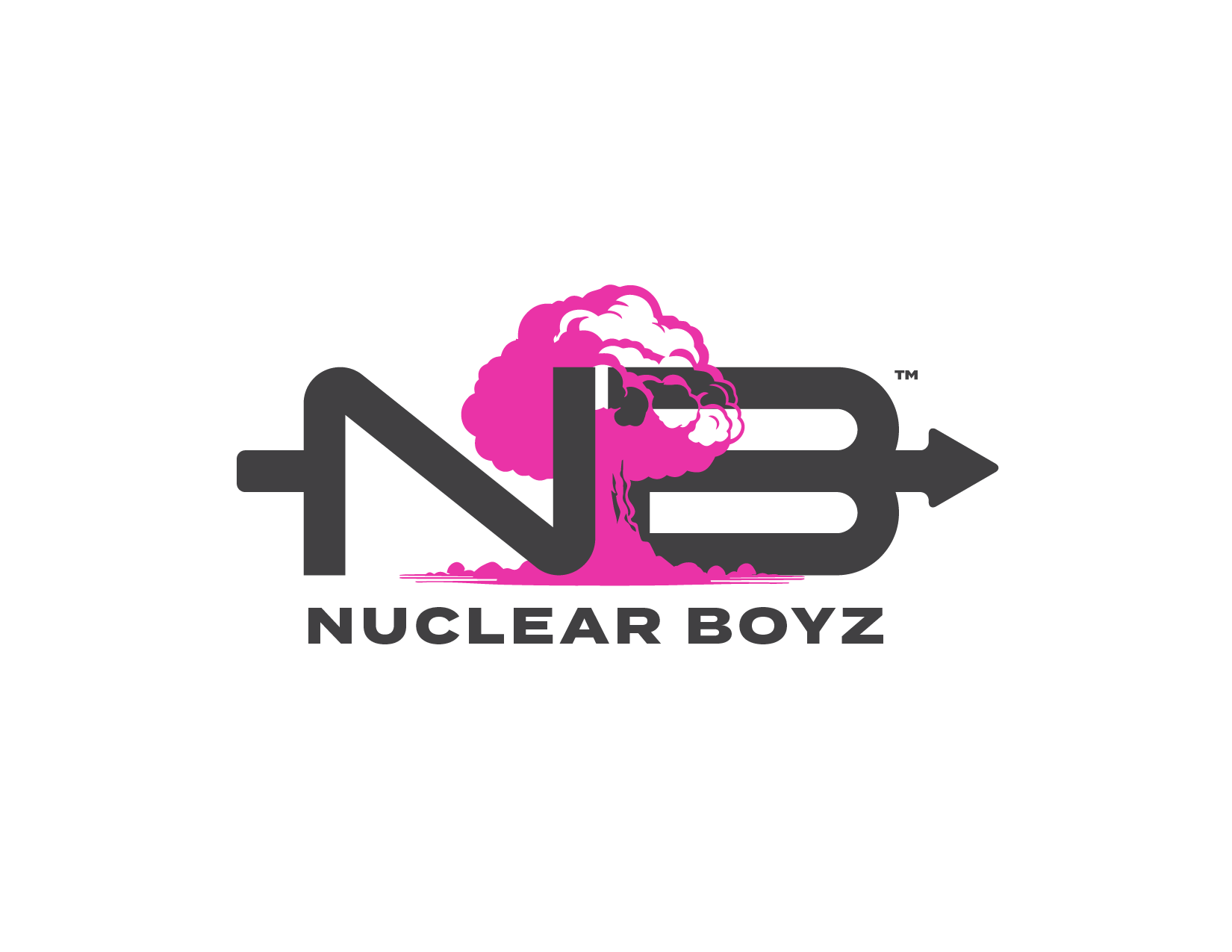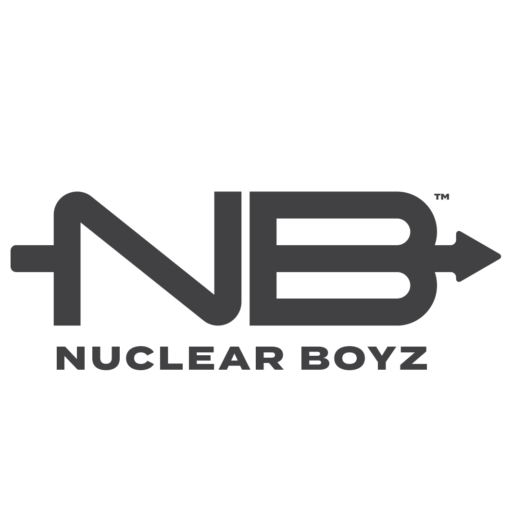Recording the Nuclear Boyz:
By Kenneth Woods
The original Nuclear Boyz recordings were done in 1982, 1983, and 1984 when I was just in high school, and were done with two Radio Shack mixers, that were being closed out at that time, that I bought for $30 a piece. (That’s what I could afford at the time, being just a kid and all). Those two mixers, were fed into a Yamaha Producer Series four channel mixer, that I had bought in 1981, that went into a Pioneer cassette deck. (One of two that I had). All the microphones were Radio Shack. The two “good,” top of the Radio Shack line microphones, were full range condensers, using double A batteries to power them. They were $100 a piece at the time, and I still have them! (And yes they still work!) There was not a budget to get more of these, so the rest of the mics, were these thin $10 condensers, that were as round as a Sharpie marker. They were also battery powered, and used a special small battery to run them.
There were not enough channels on this mixer setup, so I tried to use headphone Y cables, to combine two mics on one channel for the drums and it worked! These crude mixers only had level control. No EQ, no compression, no limiter, no pan control. As basic and raw as it gets.
The two “good” mics, were used on the kick and snare. All the other $10 mics, were used on the rest of the drums and two amps, one guitar, and one bass.
When recording the Nuclear Boyz, with this limited equipment, there was no multitrack recorder, or the ability to do punch ins. It was all or nothing, or start over for another take if it wasn’t good. This was crude and raw! It was strictly a live music performance, captured on cassette tape.
Once we had good takes, of all the songs we wanted to record, I would reconfigure the recording setup, so I could replay the good takes of the music through the mixer, and add two vocal mics, the “good” mics, to do the vocals and record it all onto another cassette deck. (Overdub). Again, there was one take only at a time, or we did it over and over again until we liked it. (Most of these sessions were done over a weekend where we did the all the music on a Saturday and then the vocals on Sunday.)
The next phase, for me was to edit it all down, to all the good versions and EQ the final master tape, (another cassette). From there, I made copies (more cassettes), to give to the band and friends.
We did these recordings sessions multiple times, in several locations, over a three year period, with the last one being done on a four track reel to reel Teac recorder, I bought at a police auction for $400.
Fast forward 40 years later, and I have kept all of these original cassettes of the Nuclear Boyz. They have spent decades in garages and storage units, never played again. It was only recently, that I bought a cassette deck once again, to see if these tapes even played anymore. With the daily heat cycles, these tapes have endured for decades, I wouldn’t have been surprised that the tapes were completely destroyed.
But, lo and behold, they played, and they sounded just like the day they were recorded. Only one tape, after taking weeks in my spare time to catalog all the tapes, had very many drop outs. I was thrilled to listen back to all of these recordings, and my memories were transported back to that guest house once again, where most of the original recordings were made. The lyrics were back at the tip of my tongue, and I was thrilled to hear my high school self on tape tell the band, “we’re rolling.”
Since the tapes were “good” and playable, I wondered what could I do with them now? Could I make them sound significantly better?
I recently had bought an audio plug-in, that through AI, separates out the different instruments, and vocals, from a finished track. I wondered if it would work, and how it would sound?
I tested it on a Nuclear Boyz cassette recording from forty years ago, that I transferred, (recorded), into my DAW. The plug-in AI separation of the different instruments is impressive, but not without compromises, and artifacts. The “cleanest,” or most isolated results, sound like an aggressive noise gate, that takes off the attack and tail of the sound’s wave form. Making it sound unnatural. When preserving more of the original sound, attack and release, for example, of the lead vocals, there are remnant artifacts, of the other instruments, that bleed into the results. It wasn’t perfect but, this was the option and settings I chose, to separate out the vocals. The “artifacts” I would try and manually edit out inside the DAW.
Through this restoration process, I was thinking if I could take that original cassette recording with no vocal, and then add back in, an edited new vocal track, I could control, I would really have something. Perhaps… (?)
So I went to work, adding back a new separated vocal track, that now I could edit and process, like I was never able to, in the original production. This was critical, because the original vocal recording was done, without compression, or limiting, so the dynamics of these vocal recordings, were all over the place. With the separate vocal track, I was able to re-level the recording, word by word, where necessary. After this detailed work, it actually started to sound alright, during playback, with the music. I was making progress.
The original two channel music track needed work too. Whenever the toms were played, that were recorded with the $10 Radio Shack mics, the signal level was too hot. To remedy this, I employed a dynamic EQ, that would lower the mid bass frequencies the toms were hitting in. Whenever those drums were struck, they would trigger the dynamic EQ, and they were then lowered in level, in the mix. More EQ and other filtering was applied to the original music track too.
In all of these original recordings, the other drums were always lower than we ultimately wanted, because I simply didn’t have the dynamics processors to compress the dynamic range, and get an overall louder signal to tape. The kick and snare especially, were weaker than desired. This was something I wanted to see, if I could improve.
I went back to the AI plugin, and ran the music only two channel recording back through it, and used the “separate drums” setting. The results were an artifact filled version of the original drum playing. My intention, wasn’t to process or use this new separated track at all. I took this separated drum track version I now had, and synced it to the original two track recording, it just came from, back in the DAW. Now with the guitar and bass mostly removed, I could analyze the original drumming performance, that was previously hard to hear, with the other instruments around it.
My next step, was to find kick and snare samples, that best represented the original recording. My goal was to make it sound like we “unmasked,” the original playing, instead of making it sound like we were pasting on something different, like you hear, in many hip hop productions.
Once I had the samples, the real work began, to lay them in one at a time. The trick here, was to not only align the samples with the original playing, but also to duplicate the original dynamics, by changing the wave form level of each sample, to match the recorded dynamics in the separated AI drum track. Once this lengthy process was completed, the drums did come to life like never before!
To help meld them together, with the original recording, a room simulator plugin processor, was used to duplicate the original recording space, for the new samples.
Lastly to help define the kick, a side chain signal of the kick was sent to the main two channel music, where the music would be compressed, a few db below 80 hz, every time the kick hit. This would carve out some lower frequency space for the kick, so it would not sonically interfere with the bass.
The tracks now had some better drums for the first time.
THEN!! Wait! We interrupt the end of this production explanation to say along the way of this restoration journey a new AI plugin came out that specifically separates the drums from the music and then puts the different drums into separate tracks too! Within the first few days of release I downloaded a demo version of the software and tested it on these old cassette recordings. The results were amazing! This new plugin changed the game literally overnight!
What was most amazing was how it left the music without the drums in them. The drums were removed but the left over music track wasn’t full of artifacts. It sounded pretty good. The other huge side benefit of removing the drums from the music was, since the drums are mostly “noise” in many respects sonically speaking, the left over music was cleaner for the first time without all the drum and tape noise. I had a new tool to improve this restoration once again.
From here I reworked everything once again with this new technology.
So how does it sound? The before and after comparison is dramatic but it is still a raw live recording with Radio Shack equipment done forty years ago on cassette decks. I would describe it now as a sort of semi polished underground sound. And I love it! It rocks!
This is the NUCLEAR BOYZ!!!

